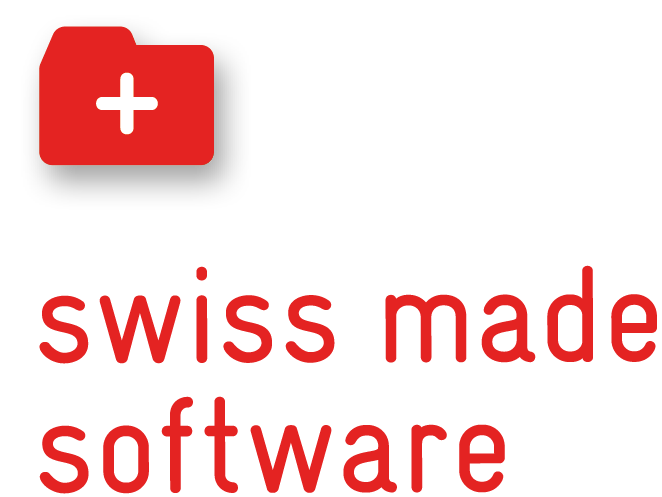Matteo Bozzo founded HeidiPay in 2020 together with Laurent Rappaport. HeidiPay is a fintech startup that provides merchants with the technological infrastructure to provide buy-now-pay-later (BNPL) services to customers. Recently, the Italian Bank Mediobanca acquired a 19.5% stake in HeidiPay through its consumer credit arm Compass. In this interview, Matteo explains who buys what on credit, and why the Swiss startup doesn’t shy away from competing against BNPL giant Klarna.

For shoppers, paying in installments without paying any interest is an attractive proposition. But how does HeidPay make money?
It is of course much more attractive to pay over 3 up to 24 months without interest than using your credit card or getting a personal loan and paying a high-interest rate. In our model, HeidiPay pays the merchant immediately when the sale takes place and the interest rate for the loan is effectively paid by the merchant. The more than 300 brands and retailers that are working with HeidiPay are willing to pay in place of the end customers because it allows them to get new clients and increase the size of the shopping baskets. We offer a win-win-win proposition for clients, merchants, and us. The merchants decide what terms they want to offer. For many items, 3 monthly installments are already attractive enough. If merchants want to offer longer terms, which are more expensive for them, they need to be able to support this cost because they have high margins or treat it as a marketing cost.
What kind of products does HeidiPay typically finance?
Usually, it’s items below 5’000 Fr. Our average is around 1’500 Fr. For items under 100 Fr., our offer doesn’t make much sense. There is a very broad range of articles, and it’s not just luxury. We finance a lot of electronics, iPhones for example, but also fashion items such as handbags or exclusive sneakers, or even furniture from leading retailers and brands.
What difference does it make if you work with a physical store or an online merchant?
Online merchants can display both the list price and the price per month with installments. That helps them unlock additional buyers. They just upload our plug-in and decisions about where they want to offer BNPL in the e-commerce platform they’re using. In a store, the use of BNPL can be compared to the promotion of certain articles, or merchants can decide to offer it only to certain clients.
How do you avoid bad credit risks?
In Switzerland, it is very common to pay by invoice with payment terms of 30 days. Interestingly enough, customers don’t see this mode of payment as a form of credit. In general, using credit to pay for things is still very much frowned upon in Switzerland. But why do merchants offer the possibility to pay by invoice? Because in general, the Swiss pay and they pay on time. Now, when you extend the payment terms to several months, the risk of non-payment rises, and you need to be more careful. This is why we work with several layers of security, in addition, to verifying customers’ solvability with the available databases generally used by finance and invoice providers in Switzerland. Customers need to enter their debit or credit card details, which allows us to check that they haven’t maxed out their cards yet. It also allows us to directly charge the installments from their cards every month. For items with high prices, say, a 5’000 Fr. watch, we ask our customers to take a picture of their ID, with an integrated functionality at checkout which takes in total up to 3 minutes or so. Thanks to cutting-edge anti-fraud solutions, we keep our losses from defaults small.
Is BNPL something for poor youngsters?
BNPL is a convenient way to pay that is used by most of the population nowadays. In fact every Swiss uses a form of BNPL without realizing once they pay their invoices for online shopping at the end of the month. I’d say the bulk of people in Switzerland that use BNPL are somewhere between 25 and 45 years old. We use similar selection criteria than banks, but are more inclusive when it comes to accepting more people with permit B for example. Take something as aspirational as the invisible braces that aren’t covered by health insurance policies. The bill can be several thousand francs, and we work with a couple of companies offering these treatments. People see them as an investment in their appearance and are happy to pay in monthly installments. However, we verify before the purchase that customers don’t have solvability issues or have late payment outstanding which are generally flagged in the databases like CRIF.
BNPL is a highly competitive field with actors such as the unicorn Klarna or the listed companies Affirm or Block, which acquired Afterpay. How can HeidiPay compete with these very well-financed giants?
Klarna is a pioneer in the industry, but in Switzerland their product is limited to “pay in 30 days” with no ability to pay over time. It is basically competing with invoice finance providers and soon will be joined by Twint, which announced a partnership with Cembra to be launched in Summer 2023. We are rapidly gaining market share against competition everyday by offering the most flexible payment terms to customers, combined with a card-based technology which lowers the fraud risk vs. traditional invoice-based solution. In fact we are often on the same “checkout” than Klarna, having complementary value propositions for merchants.
HeidiPay recently raised a large financing round with Mediobanca’s consumer credit arm Compass as lead investor. Your technology is powering Compass’ BNPL offering in Italy, branded PagoLight. What does this partnership with a big bank means for your future?
We are proud that Compass selected us for our technology and know-how amongst many other BNPL players. We can use it as a blueprint for other European markets. We can tell banks in Germany, France or any other European country that if they want to beat Klarna at its own game, they can have their own BNPL solution up and running in 6 months by partnering with us. They would also benefit from our international network, which is mutually reinforced by every new lender joining us. The main reason why Klarna was winning so far is that they can leverage their international presence and have benefited for years from attractive capital from investors. They tell a merchant, look, we’re covering 20 markets around the world. But they can’t be good everywhere, and no longer benefit from unlimited capital. In Switzerland for example, their product offering is quite limited and they have reduced the team size to the minimum. More and more banks see an opportunity to enter the BNPL space, especially for long term BNPL and regulated point-of-sale financing. Our partner Compass already has millions of customers, which often cross-over with BNPL customers. They therefore already have scale, financial and operational means to grow their BNPL business substantially with an announced goal to make one billion BNPL loans within 3 years.
i2 group structured the first fund that financed Heidipay’s BNPL solution and provided its investors with attractive returns. With an Italian bank as shareholder, is there still a need for such a fund?
There are different ways in which the i2 group can grow in the BNPL space. A business like ours needs access to a pool of capital, and such a pool always needs a regulatory umbrella under which it operates. Compass funding its own BNPL business is but one source of capital. And this model also takes time to set up, so i2 group could even be useful for banks that want to speed up their market entry. As the market matures we will also see a differentiation between the sources of capital. Banks will want to keep the good mainstream risks. But if you’re an investor with a bigger risk appetite, you have strategic value for the whole system. Imagine that we can tell a merchant, look, thanks to our investor pool, we can raise the acceptance rate of clients for BNPL from 50% to 65%. That would have a huge impact on a merchants bottom line because of the volume of additional sales that unlocks. And on the other side, there surely are enough financial players that would be more than willing to underwrite risks that European banks won't take on their books if the returns are high enough. In this regard, i2 group can be the enabler in the value chain that connects investors to BNPL providers.
Do stores really care that much about a difference in the acceptance rate?
There are BNPL solutions in the market that have a very low acceptance rate, and I’m convinced they’re bound to disappear. A low acceptance rate protects the BNPL provider but is a huge mess for the merchant. Imagine a shopkeeper that has to explain to 3 out of 4 clients that their BNPL application has been rejected, without knowing the exact reasons. I heard of salespeople that stopped offering BNPL because they were fed up with the kind of discussions that ensue. If you think that sounds bad, it is even worse online. People tend to forget that selling stuff online is very expensive. You spend a lot on digital marketing and Google Adwords to bring potential clients to your online shop. And now imagine that you have to decline most of these eyeballs you invested a lot in to acquire the possibility to use BNPL? They will surely go somewhere else. This is why a high acceptance rate is key for BNPL.
Interest rates are rising again, and the economy is weakening. What are the effects of this mix on BNPL?
On the default side, we haven’t noticed an effect yet in Switzerland and Italy. Higher interest payments for mortgages and personal loans might even contribute to more volume in BNPL, we’ll see. When interest rates and therefore funding costs rise, BNPL providers either have to pass on the additional costs to merchants or they reduce the acceptance rates to reduce risks and improve margins. So, it’s a difficult time, especially combined with a more challenging fundraising environment. For us, we rather strive in this environment with a “capital light” model based on bank partnership. Banks never felt more empowered to enter the BNPL market, and are demonstrating that a rigorous approach to risk management pays off in the long run. These are exciting times.


